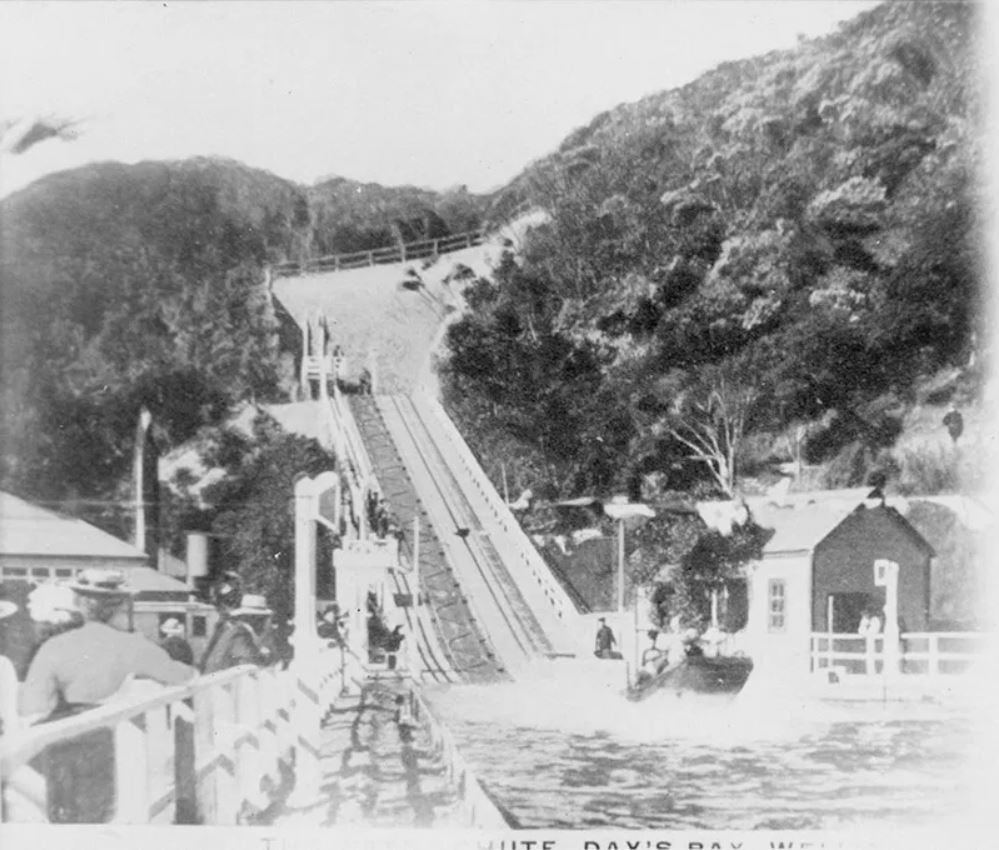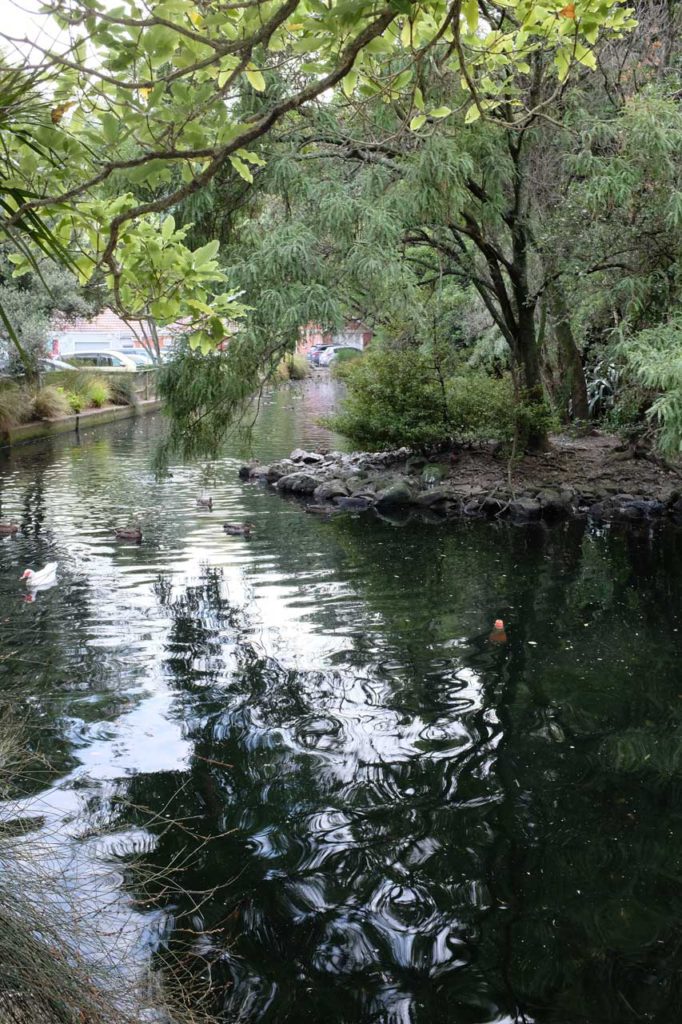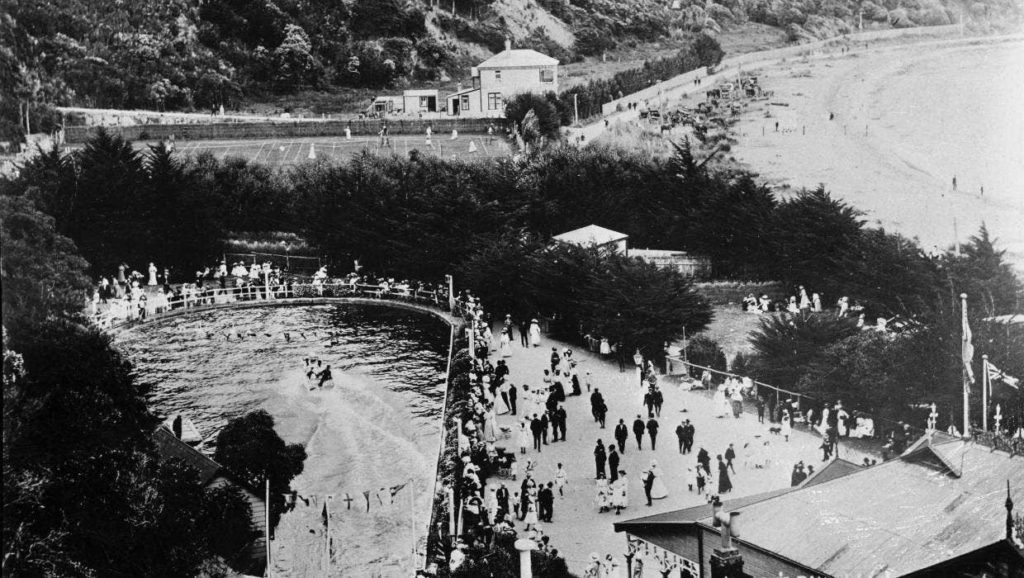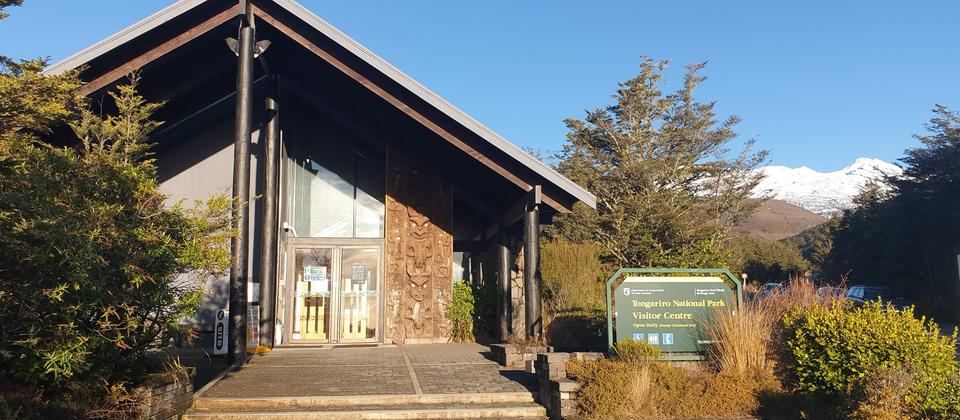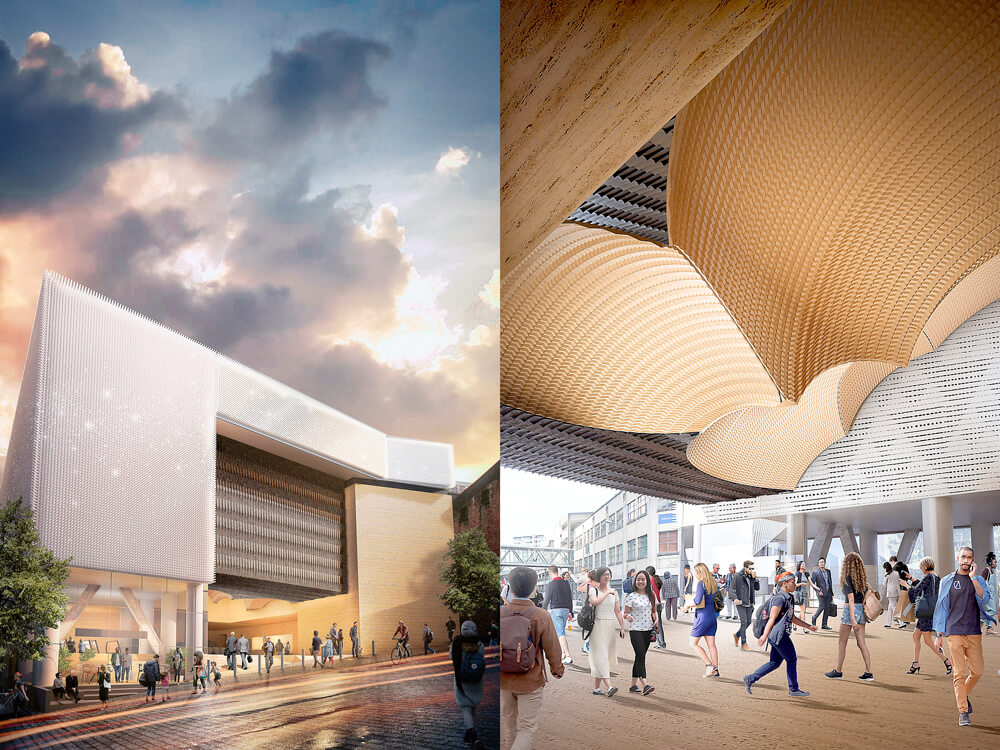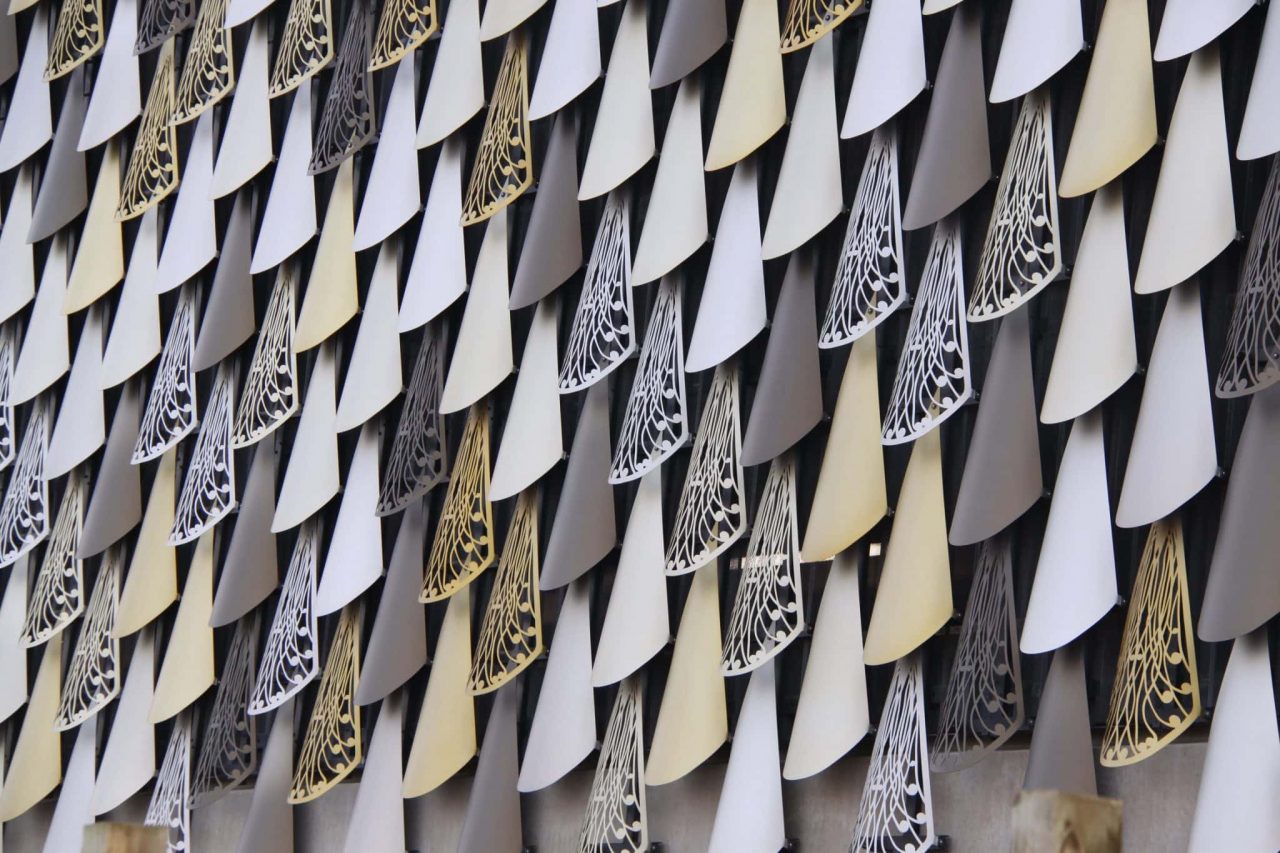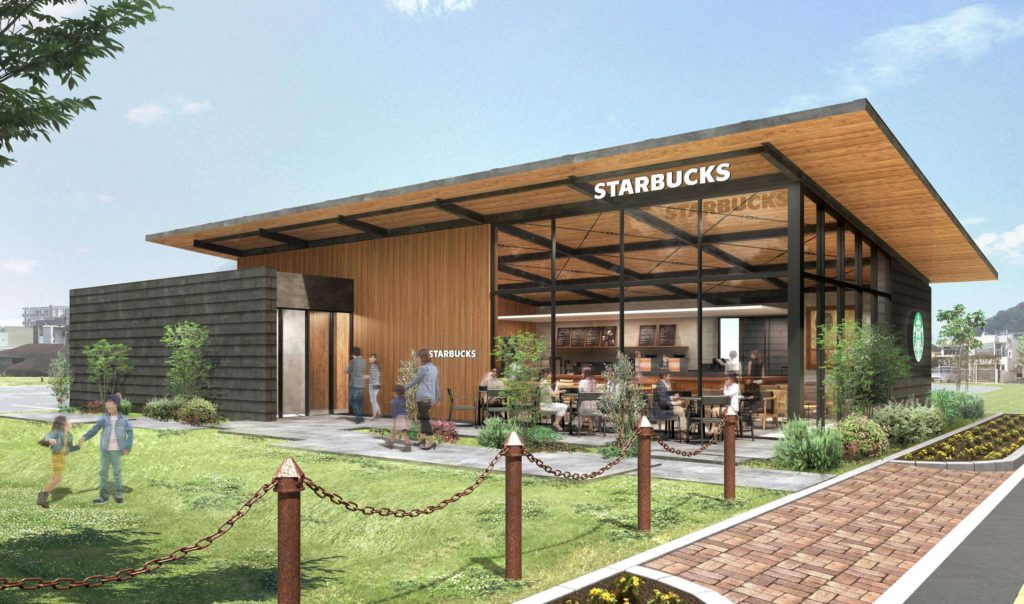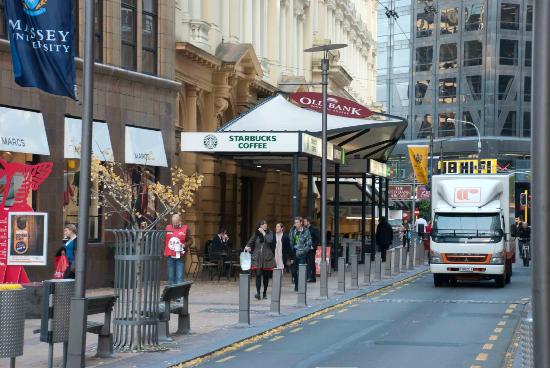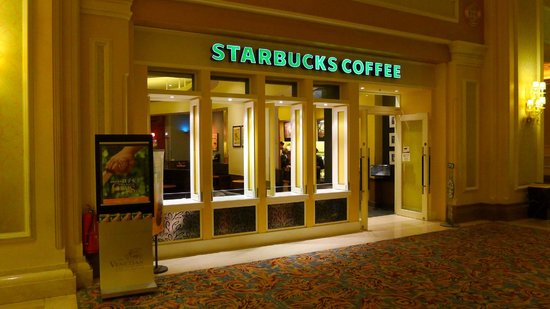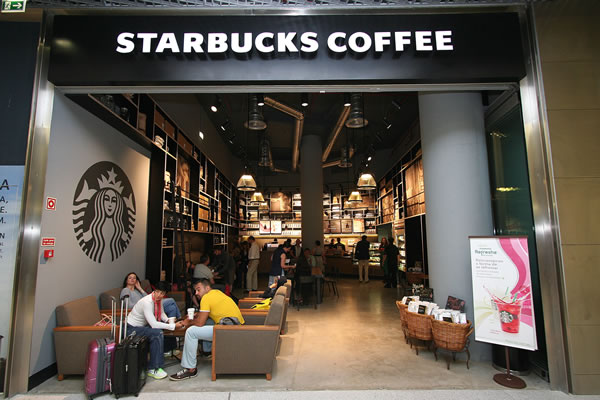Session 1: The Consequences of our Making
Tasks
- Going for a Walk
- Collecting Curious Instances
- Article about Urban Design and Tikanga Māori
1. Going for a Walk
Days Bay walk…
2. Collecting Curious Instances
This was an interesting activity to do. I thought through the things that interested me as I walked around, and hadn’t realised before that I do feel a strong connection to nature and how humans adapt, and don’t adapt, to it.
Instance #1. This building, and the duck pond, are not what they seem. They were originally part of a water slide, when Days Bay was even more of a tourist place than it is now.
Instance #2. Two enormous trees have a huge sense of presence.
The trees are uncompromising. Humans have needed to adapt to them, not the other way around. In the nearest tree, we can see that that the road cannot be straight; the yellow lines needed to follow the natural shape of the tree.

People wanted to drive cars around this tree, so they used a flexible arrangement of concrete blocks that allows the tree’s irresistible roots their freedom to expand and extend.
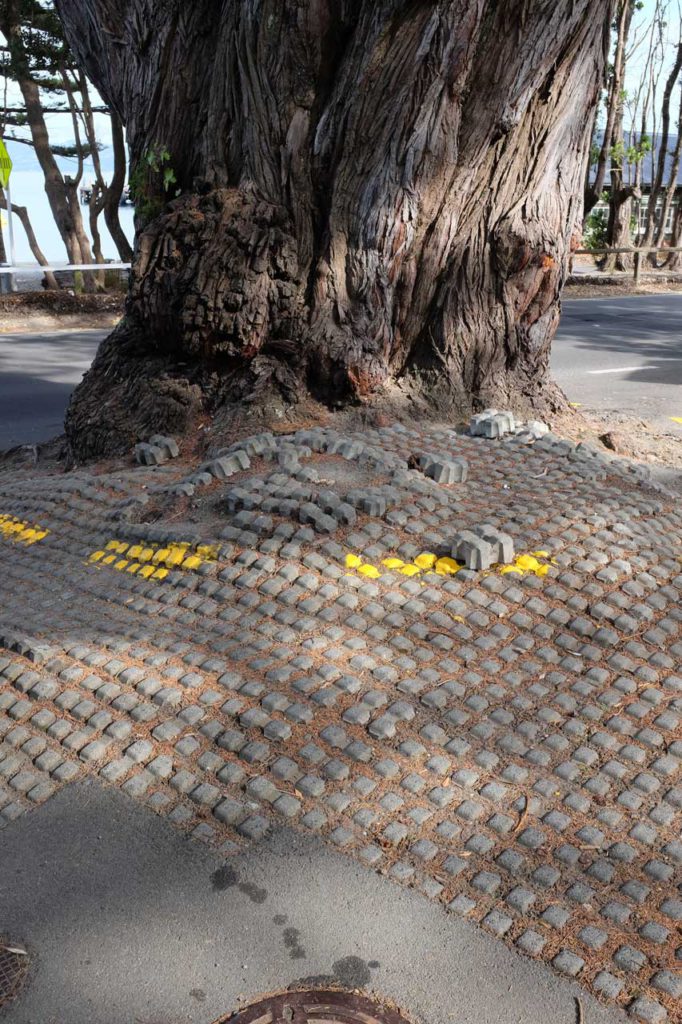
Allowing the tree to have some freedom has the side effect of creating an irregular surface, which could become a hindrance to wheelchair users or people who are otherwise mobility impaired[1]https://www.odi.govt.nz/home/about-disability/disability-etiquette/.
I considered Session #1, and Sunaura’s comments about designed environments. Can an environment designed by humans to be accessible also allow nature to be free to change the environment? Can a better paving approach than these concrete blocks be designed, such that the tree can shift its root system, while at the same time maintaining a surface that’s accessible for mobility impaired humans?
I feel something in the presence of these trees. I’m sure that if these trees were in Japan, they would be seen as having spirits reside within them, and shinenawa (sacred rope[2]https://en.wikipedia.org/wiki/Shimenawa) would have been placed around them.
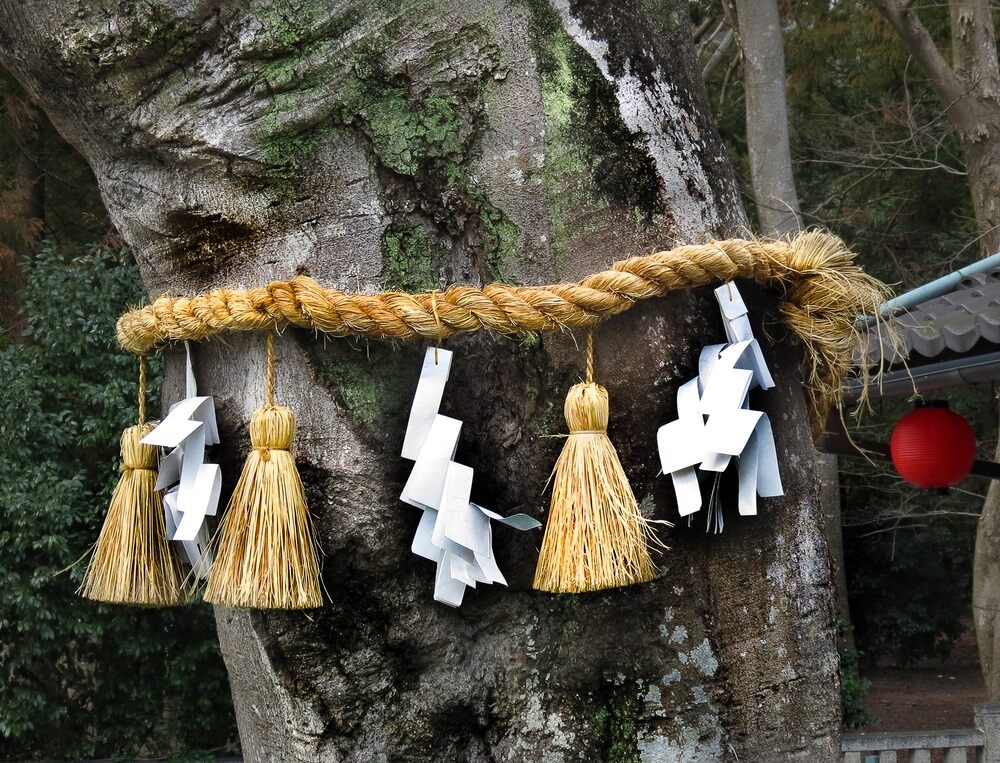
Instances #3 and #4. The house at left and the wooden walkway on the rocks are both in a fight with nature.
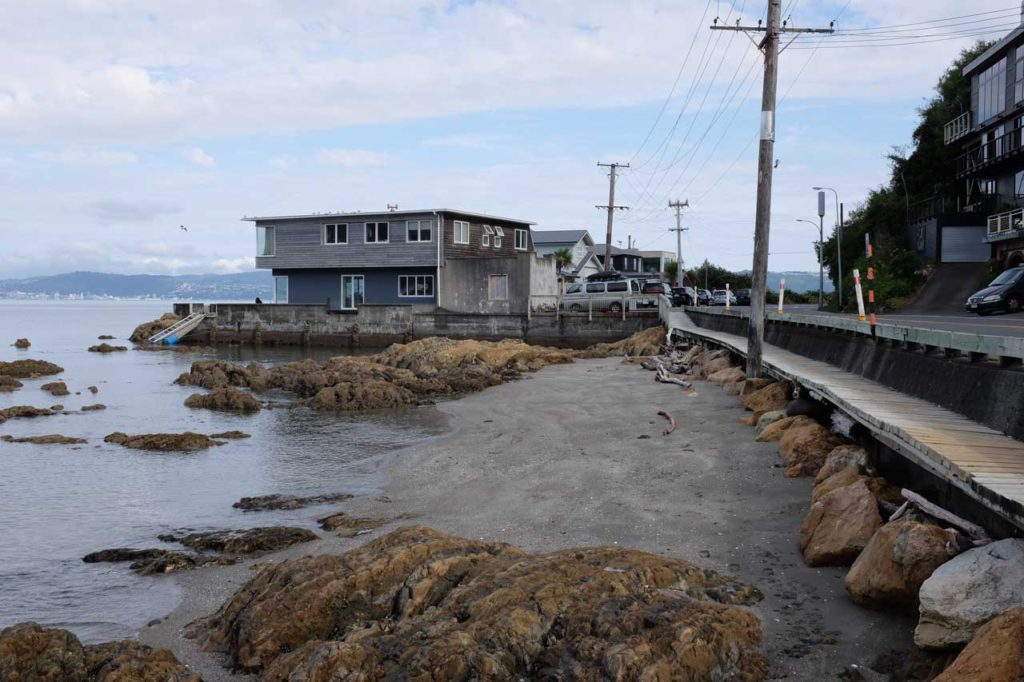
The house was built only a few years ago, after the severe storm in 2013 badly damaged the 19th century cottages that were originally there. One of the old cottages was the one famously used by Katherine Mansfield[3]https://www.stuff.co.nz/life-style/home-property/81953127/katherine-mansfields-former-weekend-hideaway-restored-after-storm-damage. The new house makes extensive use of concrete and is heavily reinforced against the sea. The house is heavily orthogonal in its design, but the natural rocks in the foreground are not like this. The rocks have adapted to the ocean and appear immovable; the concrete house will eventually suffer the same fate as the previous house. Could a house built more organically survive? Could a house be built to weather, abrade, and adapt to it’s location?
The wooden walkway was also built as the result of the storm. Since then, it has been heavily damaged at least twice. I still have a thick stainless steel bolt that I picked up from the beach after one event. It had been torn out of the walkway, and was also bent and starting to corrode. I remember at the time feeling like it was nature saying to the builders, “screw you and your bolt – this isn’t your place, it’s mine”.
Instance #5. A fence that has been adapted to the needs of a tree.
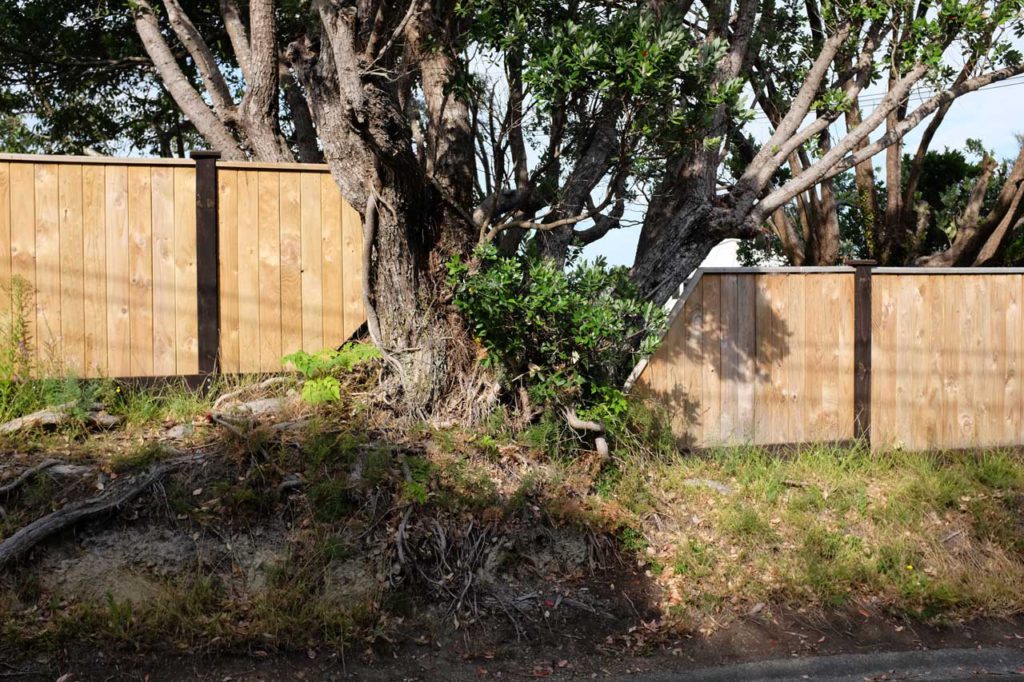
I cheated a little. I built this fence. It was designed to fit around the Pohutakawa tree. I didn’t dig holes into the tree root system to place fence posts into concrete, which would have involved severing root, and also leach chemicals and alkalinity; instead, I had inert steel ground screws installed that make will have minimal impact on the tree. The treatment of the posts is organic, and won’t be toxic to the tree. The fence is bolted and screwed together, rather than using cheaper nails. It’s designed so that it can be taken apart and amended as the tree grows, rather than being fixed and constraining to the tree’s growth, which may have resulted in damage to both the fence and the tree.
3. Article[4]https://idealog.co.nz/urban/2017/11/building-culture-why-good-urban-design-requires-better-understanding-tikanga-maori about Urban Design and Tikanga Māori
Patterns of previous Maori settlement and the relationship of tangata whenua with the land remain important aspects of urban design.
New Zealand Urban Design Protocol, 2005
Why good urban design requires a better understanding of Tikanga Māori:
- New Zealand is one of the most urbanized countries in the world, at 87% [5]New Zealand Urban Design Protocol, 2005.
- People living close to each other are connected in many ways, for example family, friendships, work relationships, and so on. The common environment in which they live is also a connector.
- Urban landscapes rarely incorporate any elements of Māori cultural identity. To urbanized people of Māori ancestry, we can only imagine that this will feel like living in a city, but not feeling part of the city; to other city dwellers, New Zealand takes on the homogeneity of any other urbanized country, and our unique culture is neither tangible nor celebrated.
- For visitors to New Zealand, our cities are likely to be the first experience they have of the country. It’s important that they reflect our cultural identity, including our unique Māori heritage.
- Technology and a desire for better work-life balance are leading to changes in the patterns of city use. This may well accelerate in a post-pandemic world – freeing cities to permanently reclaim public spaces as gathering spaces[6]Post-pandemic cities can permanently reclaim public spaces as gathering places. https://theconversation.com/post-pandemic-cities-can-permanently-reclaim-public-spaces-as-gathering-places-150729. This could enable the creation of accessible spaces for Māori cultural activities.
- Is New Zealand society so nervous of appropriating Māori cultural identity that they lose out on the opportunity of appreciating and celebrating it?
Quality urban design also increases economic value with higher returns on investment, reduced management and maintenance costs, more productive workplaces, and enhanced image and prestige.
New Zealand Urban Design Protocol, 2005
The banality of yet another Starbucks branch
Article on Stuff, Days Bay Water Chute https://www.stuff.co.nz/dominion-post/capital-life/72349735/days-bay-water-chute-thrills-150-years-of-news New Zealand Urban Design Protocol, 2005 https://www.mfe.govt.nz/sites/default/files/urban-design-protocol-colour.pdf What does Māori architecture look like today? https://thespinoff.co.nz/atea/07-01-2020/what-does-maori-architecture-look-like-today/ How Maori principles shaped the City Rail Link's award-winning design https://www.metromag.co.nz/city-life/city-life-urban-design/how-mori-design-principles-shaped-the-city-rail-links-award-winning-design Auckland's Māori Design Hub gets a "refresh" https://www.metromag.co.nz/city-life/city-life-urban-design/how-mori-design-principles-shaped-the-city-rail-links-award-winning-design
References
| ↑1 | https://www.odi.govt.nz/home/about-disability/disability-etiquette/ |
|---|---|
| ↑2 | https://en.wikipedia.org/wiki/Shimenawa |
| ↑3 | https://www.stuff.co.nz/life-style/home-property/81953127/katherine-mansfields-former-weekend-hideaway-restored-after-storm-damage |
| ↑4 | https://idealog.co.nz/urban/2017/11/building-culture-why-good-urban-design-requires-better-understanding-tikanga-maori |
| ↑5 | New Zealand Urban Design Protocol, 2005 |
| ↑6 | Post-pandemic cities can permanently reclaim public spaces as gathering places. https://theconversation.com/post-pandemic-cities-can-permanently-reclaim-public-spaces-as-gathering-places-150729 |




